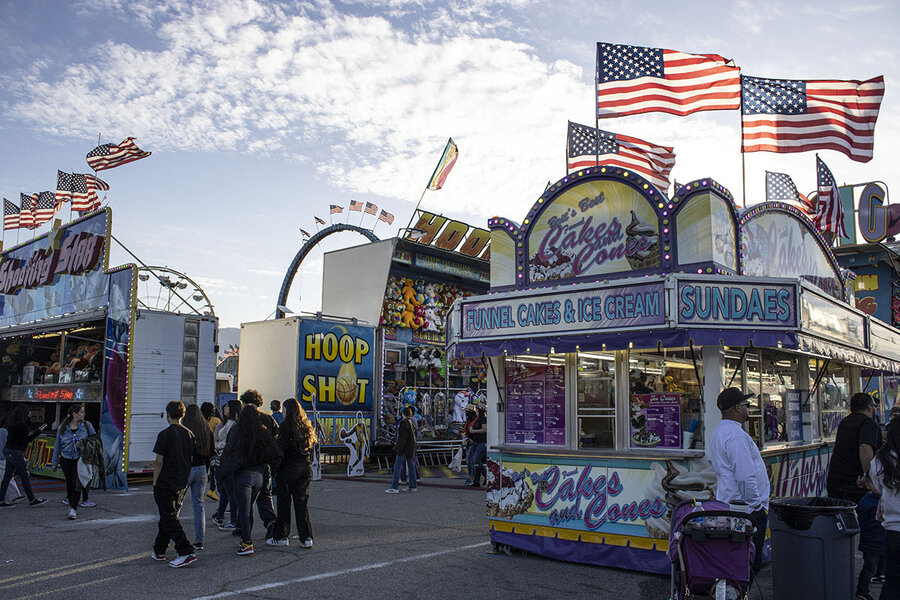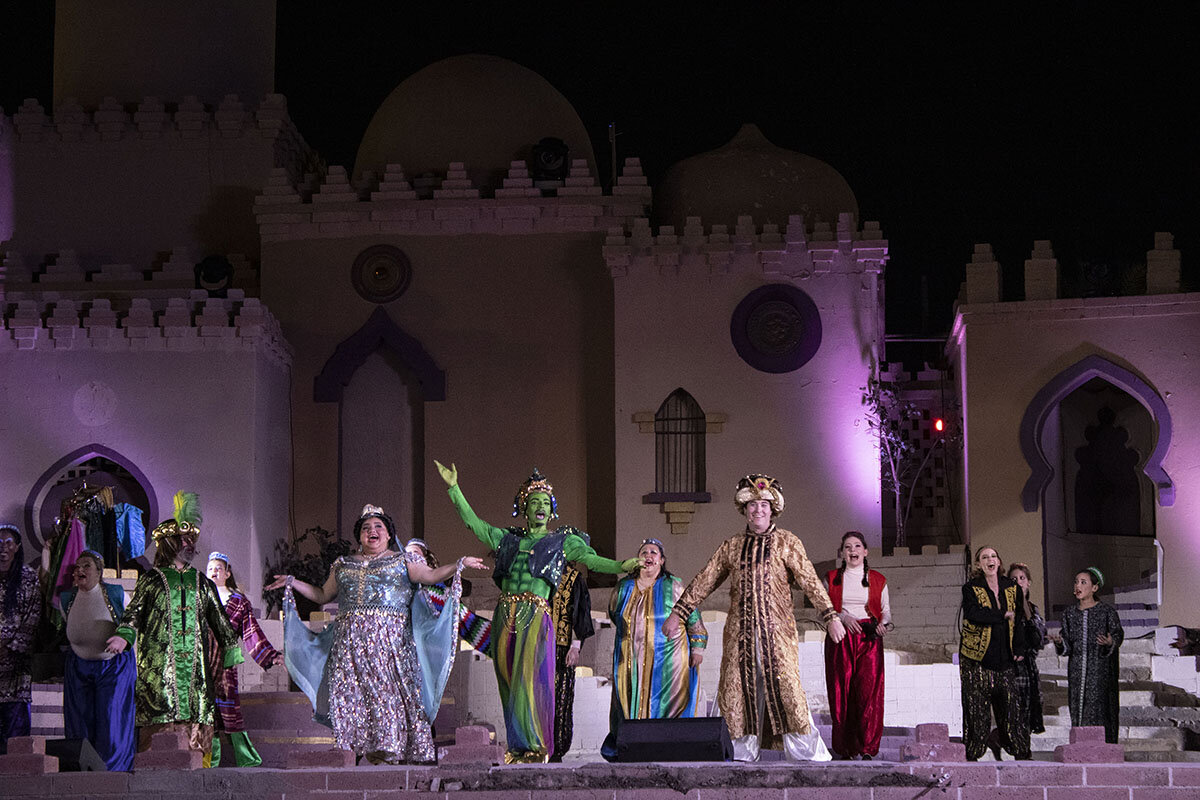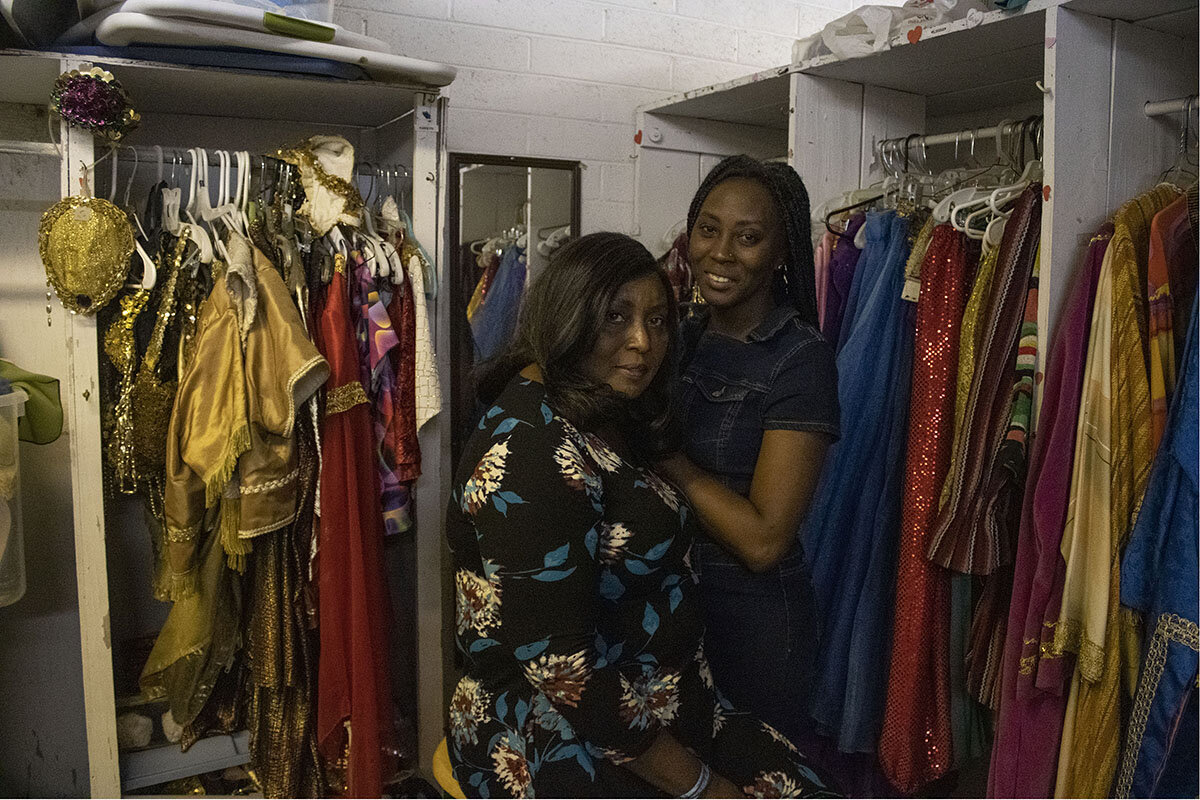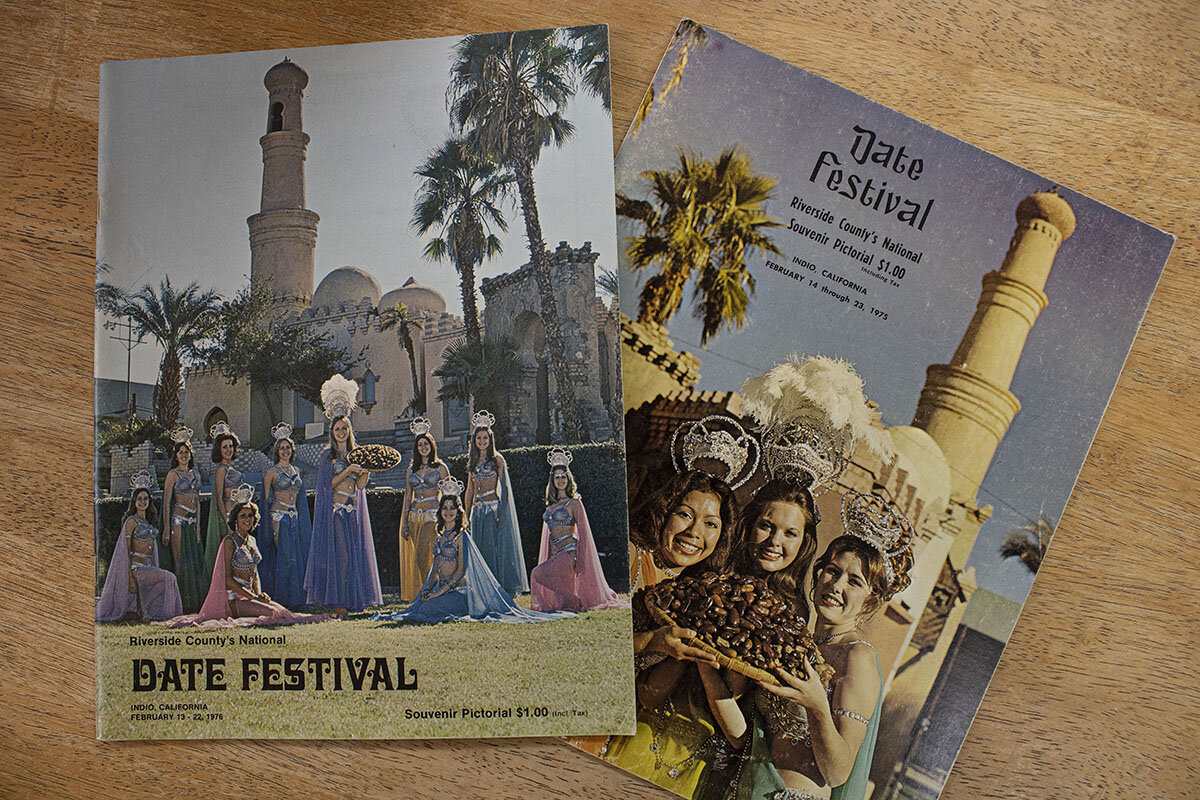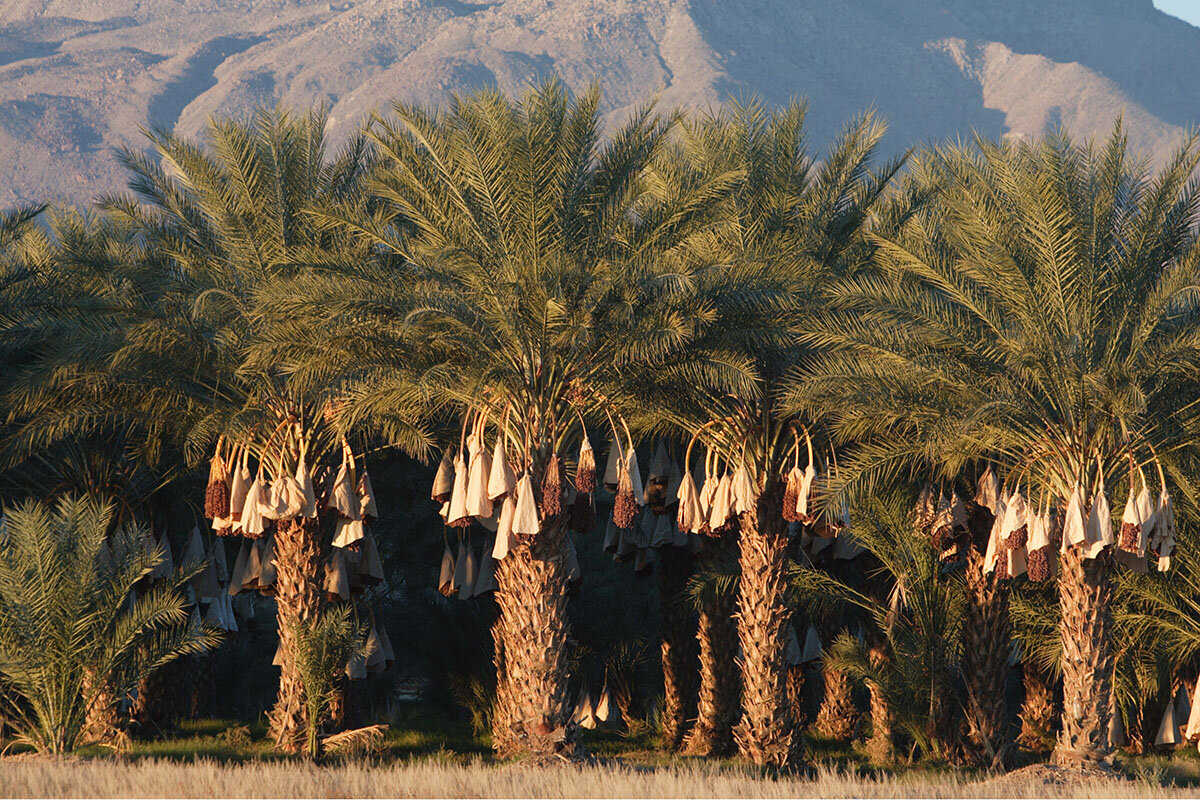‘America’s Arabia’: Dates, a desert town, and a county fair
Loading...
| Indio, Calif.
This Indio, California, fair is pure Americana – corn dogs, rides, demolition derby, face painters who can turn a child’s cheeks into butterfly wings. For 10 days in February, the desert city fairground glows with candy-colored lights while the wind flicks American flags.
But walk toward the heart of the hubbub, past the smoke of sizzling turkey legs, and the scene transforms.
What looks like a minaret rising tall among the palms is part of an outdoor stage. It’s meant to conjure long-ago Baghdad – or what a Hollywood set designer in the 1940s envisioned as such. Here, Coachella Valley locals have long paid tribute to the origins of a local cash crop, the date, by performing pageants loosely tied to tales in “One Thousand and One Nights.” The half-hour version of “Aladdin” this year was based on the 1992 Disney film.
Why We Wrote This
A story focused onWhat turns an event into a tradition? In the Coachella Valley, a focus on the foreign origins of date crops became fairground folklore.
As a kid at the fair, “I’d come here every day and I forced my parents to come and watch. ... It’d come to the point where I knew the dance numbers to all the songs,” said teenager Linda Ceniceros. Backstage before a show, she sat still as a helper affixed her Princess Jasmine headpiece.
Local nostalgia runs deep at the Riverside County Fair and National Date Festival, where guests once got in for free for wearing “Arabian Nights” attire. Such fairground folklore is tied to local date palms, which originated in the Middle East and North Africa. The full-blown event, which ended Sunday, returned after a pandemic hiatus with a new operator, who has scaled back some traditions while keeping more typical events found at a county fair. The traces of sequined fantasies that endure may reveal more about America than about the Arabian Peninsula.
For many locals, those traditions have cultivated community.
“What brings me back? The cast, the people,” said pageant co-producer Richard De Haven, involved for two decades.
Castmates “become family,” said performer Mellissa Ballard, whose own family has participated for three generations. During a quick change, her mother, Pamela Ballard, was tasked with zipping up Mellissa’s flying carpet costume.
“America’s Arabia”
In the United States in 2021, California accounted for three-quarters of date production – 44,220 tons, according to a federal crop report. Date palms used for large-scale cultivation were introduced to the Coachella Valley starting around the turn of the 20th century from Iraq, Algeria, Egypt, and Morocco by Americans who included “agricultural explorers.” These U.S. government-appointed scientists traveled the world seeking profitable crops to fill the country’s expanding borders.
The arid Southwest matched conditions in parts of the Middle East and North Africa, which have grown the syrup-sweet treat for millennia.
Indio’s date festival officially began in 1921 – the same year the silent film “The Sheik” offered American imaginations an exotic Orient. (The Riverside County Fair and National Date Festival became an annual event in 1947.)
To boost tourism to their desert, locals capitalized on the date industry, infusing the fair with “Arabian” themes based on Hollywood aesthetics – fantasies of how the West imagined the East. Beyond the event, a town was renamed Mecca, streets were given names like Arabia, and Coachella Valley High School sports teams became known as the “Arabs.” (At the urging of the Washington-based American-Arab Anti-Discrimination Committee, the district agreed to modify the image of the mascot, now known as the “Mighty Arab,” in 2014.)
Local boosters marketed the eastern Coachella Valley as “America’s Arabia,” says Sarah Seekatz, professor of history at San Joaquin Delta College in Stockton. “It’s strange, because it is a cultural appropriation, but it’s based on Hollywood – and the locals are sort of not hiding that,” she says. Archival photos show young women crowned Queen Scheherazade – a central character in “One Thousand and One Nights” – posing for photos with her court beside camels and dates.
The pageantry became a source of wonder to locals like Linda Beal, born and raised in the valley, whose family grew dates.
“The costumes and the dancers and the singers ... we wait every year just to see them in their beautiful costumes,” said the Coachella Valley History Museum volunteer, who holds a small, camel-shaped purse.
To Dr. Seekatz, however, the harem imagery – like the bare midriffs used to market Medjools – involves problematic stereotypes.
“There’s a sexualization of Middle Eastern people that is historically happening in the United States for a really long time. I think the fair really shows that off,” says the historian from the Coachella Valley and author of “Images of America: Indio’s Date Festival.”
Finding a picture of her grandmother, who is Mexican American, dressed as a dancer in the pageant in the 1950s was “complicated,” she adds. “Historically, they’d been excluded from the community. And participating was one way of trying to be a part.”
“Just imagination”
Mohammed Bwaneh said his family has enjoyed coming here for several years. But he wishes event organizers would publicize more about the date sector’s history and how the fruit hailed from abroad – something to help explain why fairgoers traipse by domes and arches.
“There’s more history than just food and drinks,” said Mr. Bwaneh, representing the Islamic Society of Palm Springs at a booth. The “Arabian Nights” performances haven’t bothered him, he says; he knows their source material comes from stories.
“It’s just imagination,” he adds. “It does not represent or give you the culture of the Middle East.”
Indeed, organizers distanced themselves from the region when promoting the fair during the Persian Gulf War.
“We always hope it doesn’t scare anybody away,” an executive director of the festival told the Los Angeles Times in 1991. “We’re not involved in the Arab cause, it’s just kind of unusual timing.”
“We don’t pretend to be authentic,” a member of the fair board added. “It’s fantasy. We want dazzle and glitter.”
Visitors this year could still see prizewinning platters of dates in a building called the Taj Mahal, but gone were the ostrich and camel races (though for $15 you could ride a camel). Scholarships were awarded to 14 high school seniors, no matter their gender, in place of the Queen Scheherazade competition, which had also involved scholarships. Some locals interviewed hope that tradition, seen as more than a beauty pageant in recent years, will return.
Chris Pickering, operational manager of Pickering Events LLC, which is the new fair operator, said he’s unaware of any cultural appropriation concerns.
“The fair has its own rich, steeped traditions, and we’re looking to honor those, while also inviting and welcoming everyone in our community,” he said, noting, for example, the addition of Out at the Fair, an event that promotes the inclusion of LGBTQ individuals. Musical acts like Mariachi Sol de México serenaded guests in Riverside County, where around half of nearly 2.5 million residents are Hispanic or Latino.
“Aladdin” was spared the sword – both in programming and plot. Though critics have targeted the Disney film over Orientalist tropes, Ms. Ceniceros, playing Jasmine, said the entertainers approach their roles with respect.
“We don’t use brownface,” she said. “We don’t use funky accents making fun of them.”
The show got a shorter time slot this year, but the cast pulled it off through vibrant song-and-dance routines and surprise pyrotechnics. Ms. Ceniceros’ pastel blue gown dazzled like her voice.
“We’re happy to see it, because we haven’t seen it in three years,” said county local Richard Rios, sitting in the audience with two adult daughters. “When we come here, we’ve always got to watch it.”
Thwarting custom, “street rat” Aladdin won the princess after all. It’s a rags-to-riches rise that smacks of the American dream.




